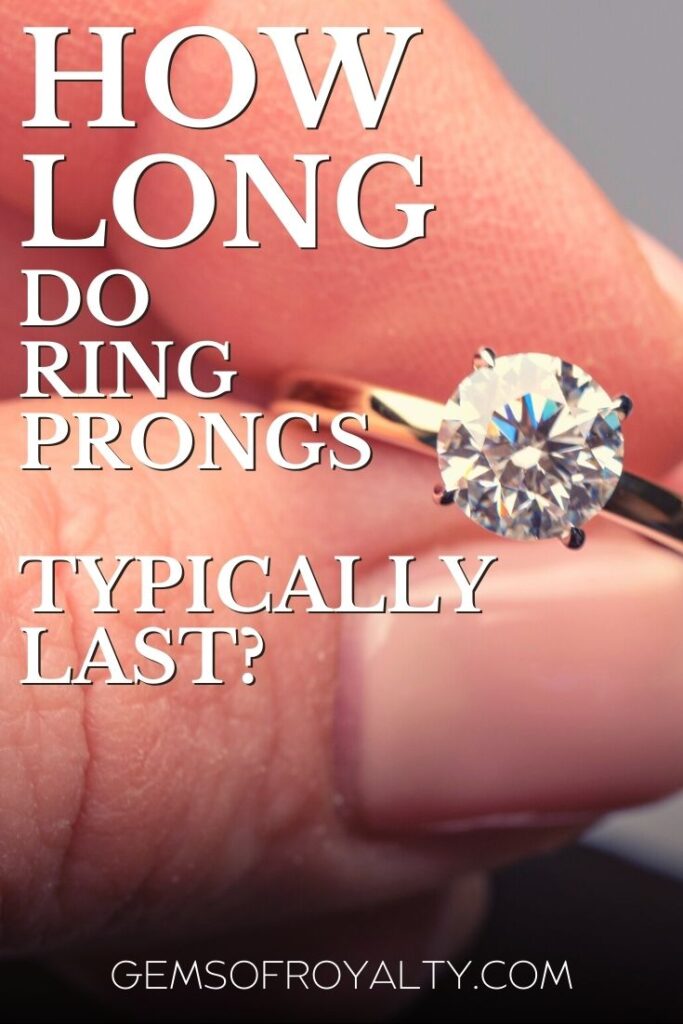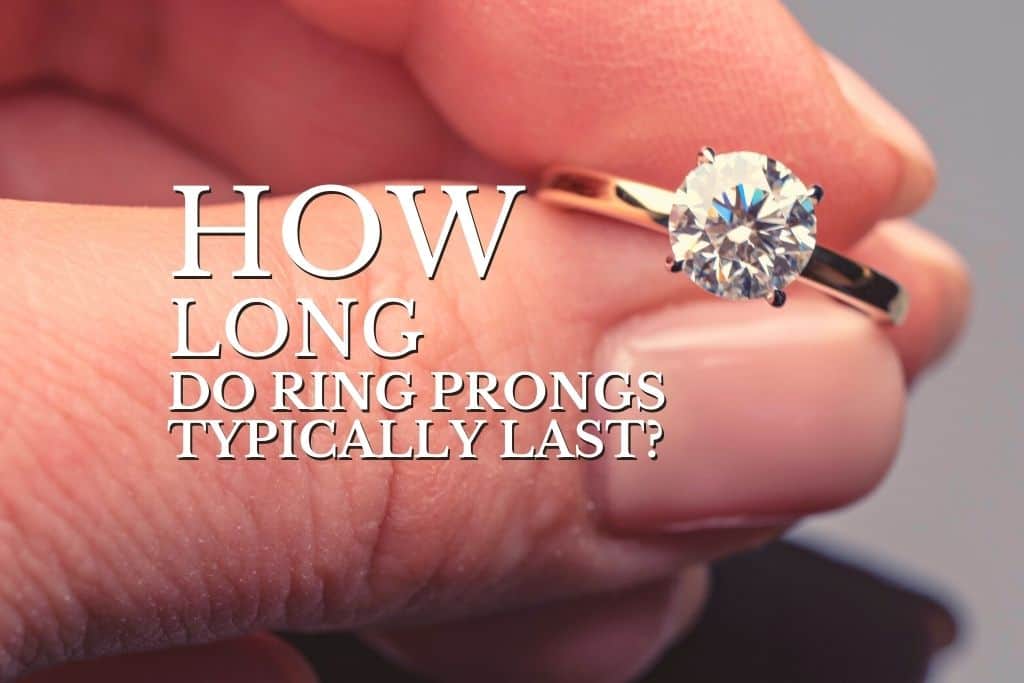You love the classic look of ring prongs! They both anchor a gemstone and showcase its gleaming glory. Still, you wonder if ring prongs ever need replacing.
Ring prongs typically last five to 10 years. If they break, a magnificent gemstone can loosen and leave its mounting. Thankfully, you can easily prevent such a misfortune by taking proper care of your ring and servicing your prongs when they begin to deteriorate.
Here you’ll learn the best home care for ring prongs, promoting their longevity. Meanwhile, you’ll also learn to spot signs of weakening and wear. At that point, a jeweler should service the prongs, termed retipping, so your stylish ring can last a lifetime.
What Determines Ring Prong Durability?
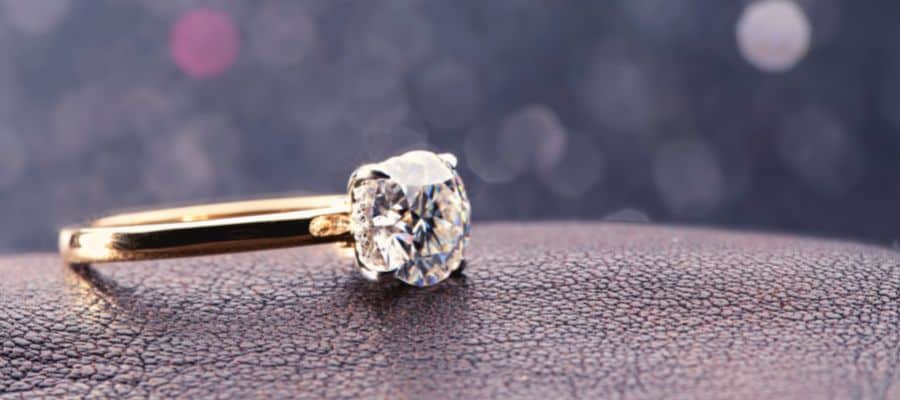
Ring prongs are delicate, made of thin metal clasps, forming a cradle for a gemstone. Each clasp has a groove to hold the outer edge of the stone. Moreover, the clips curve inward like a claw, securing the jewel in its cradle. For this reason, another name for a prong mount is a claw setting.
Four elements govern ring prong durability:
- number of clips
- jewel shape
- type of prong metal
- claw length and width
Number of Clips
Most jewelry customers choose either 4-prong or 6-prong mounts. With a 6-prong setting, the additional clasps provide greater gemstone support. Thus, a 6-prong mount wins the durability category, keeping its jewel more stable.
Still, you lose some attractiveness. On the other hand, a gemstone in a 4-prong setting appears larger and flashier. That’s because it has more surface area to catch and reflect light.
Jewel Shape
Is your gemstone round? If so, that’s another reason to pick a 6-prong setting. Since the claws sit close together, they exert a stronger hold on the stone. They also shield the surface better from impact and scratches.
Or have you chosen a square jewel? In that case, consider a 4-prong mount. Its clasps hug the corners of the stone, complementing its angular shape.
Type of Prong Metal
White gold is quite durable since it includes yellow gold. If your gemstone is a diamond, white gold will enhance its clarity. Conversely, yellow gold by itself will cast a faint amber hue.
Still, for superior strength, consider platinum. Since this metal is purer, it handles normal wear better than white gold. For example, its color won’t change over time. Additionally, platinum can withstand harsh chemicals, such as chlorine.
However, compared to white gold, platinum is more vulnerable to scratches. Consequently, its luster can dim slightly with age.
Claw Width and Length
When a jeweler shows you a particular ring, do the clips catch your eye, rather than the gemstone? If so, they’re likely too long or wide.
Ring prongs should be slender, giving a jewel center stage. Still, if the claws are too thin, they’ll break prematurely. Meanwhile, the prongs must be long enough to clamp onto the stone.
How To Test Ring Prong Craftsmanship
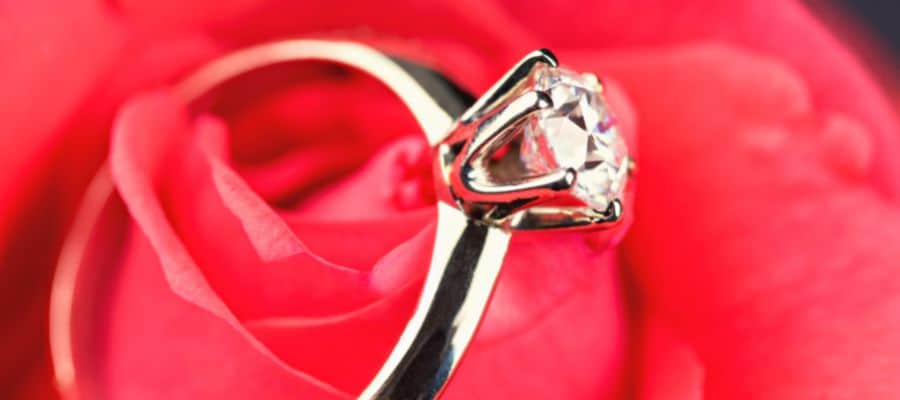
A skilled, trustworthy jeweler ensures that a prong mount holds a gemstone securely. For instance, all the clasps should be tight and balanced, keeping the stone from loosening.
Here’s how to gauge jeweler expertise.
- Place the ring on the store counter, noting whether it tips to one side or sits level.
- Examine the claws for even spacing.
- Check that the clasps cover the stone sufficiently without being a distraction.
- Gently shake the ring. If the gemstone stays in the mount, not moving the teeniest bit, the setting is well-crafted.
How To Clean a Claw Setting
All rings acquire a film from daily contact with hairstyling products, cooking ingredients, lotions, and the like. The resulting gunk keeps a gemstone from reflecting light, concealing its sparkling beauty. Meanwhile, any residue adhering to the ring prongs turns into grime.
You can maintain your ring’s splendor by cleaning it weekly.
Supplies
You need the following materials for cleaning:
- mild liquid dish soap
- soft toothbrush
- small bowl of warm water
- lint-free cloth
Cleaning Method
Follow these steps to clean your ring:
- Mix three drops of dish soap with warm water.
- Soak your ring for 40 minutes.
- Gently scrub the surfaces with the toothbrush, including the ring prongs and back of the mount.
- Swish the ring through the soapy mixture. Then, let it soak in the bowl for 5 minutes more.
- With your sink drain closed, thoroughly rinse the ring in warm water.
- Blot the surfaces dry with a lint-free cloth.
Tip – Cleaning your ring is the ideal time to catch ring prong issues.
How To Assess Claw Mount Damage
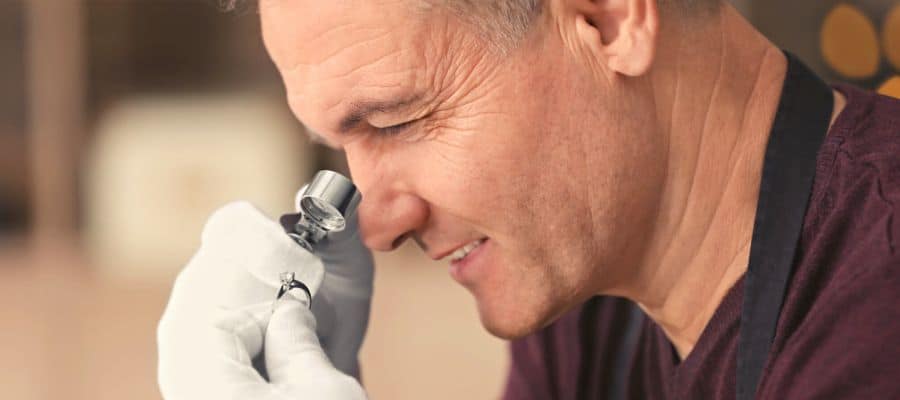
The best way to examine ring prongs is with a 10X loupe. This type of magnifier will disclose any claw imperfections.
If you don’t have a high-powered magnifier, lightly tap the gemstone with your fingertips. Then, watch for any movement. Next, try inserting a fingernail beneath the stone, revealing whether the clasps are tight.
Also, listen for troubling sounds. Holding the ring close to your ear, shake it gently. If you hear rattling, the gemstone is loose.
Signs of Ring Prong Deterioration
At some point, aging ring prongs will require a jeweler’s professional care. The telltale sign is snagging on fabrics or your hair. If you ignore this red flag, the clasps will fracture, causing the loss of your treasured gemstone. Here’s what the snagging can imply.
Claw Thinning
Over time, the claw tips can wear down, turning jagged. That’s why they get caught on certain objects, such as your clothes. Typically, all the ring prongs in the same setting wear out simultaneously. In that case, they could be on the verge of breaking.
Clasp Loosening
During your daily activities, ring prongs are bound to brush against countless items, impairing their grip. Even mild impact can render loosening. Meanwhile, both platinum and white gold settings can become thin. In turn, the ring prongs weaken.
Prong Displacement
If you accidentally bang your ring against something, the clasps can bend, dislocating. Since they’re no longer aligned with your gemstone, it’s unstable, a precarious situation.
The instant your ring gets clobbered, check the stone. Is it still mounted? If so, remove the ring, storing it safely until you can see a jeweler.
How a Jeweler Services Ring Prongs
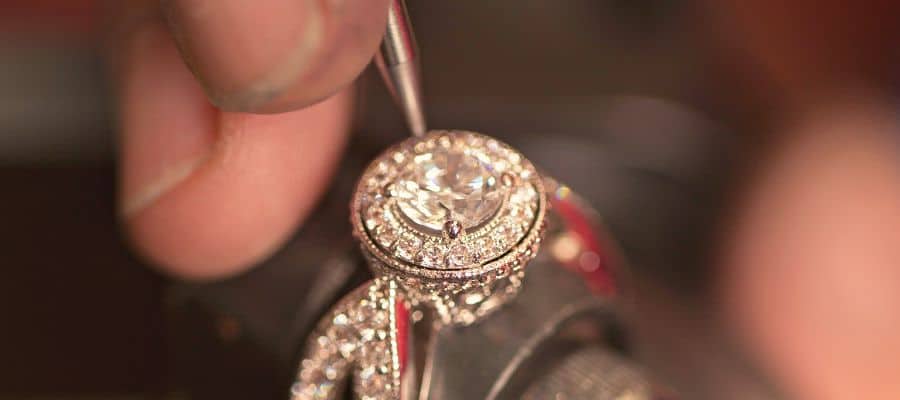
Please don’t attempt to fix a damaged claw setting! Doing so could void your warranty or ruin the gemstone.
Dedicated jewelers urge professional ring prong inspection every six months. Customarily, this service is free of charge, including cleaning. If the clasps are impaired, the jeweler will retip them. On the other hand, non-functional claws need rebuilding.
Prong Retipping
This process entails retooling the claws with the original metal. Specifically, a jeweler attaches thin wires or metal strips to the ends and files them until they’re smooth.
The repair cost depends on the prong metal and number of claws on the ring. It’s best to retip all the clasps, restoring their uniform look and structure. Currently, prong retipping costs $30 to $50 each, states Brides magazine.
Claw Rebuilding
If the ring prongs are broken or missing, a jeweler will replace them. Doing so will likely change the look of your ring. Thus, go to a shop with a golden reputation for stellar craftsmanship.
Dodging Ring Prong Mishaps
You can avoid damaging your ring prong by following these tips:
- Avoid using an ultrasonic jewelry cleaner. The machine’s vibration can loosen both claw settings and gemstones.
- To protect your ring, remove it before washing dishes. This way, you eliminate the risks of damage to the ring and losing it down the sink drain.
- When removing your ring, glide it off by holding the band. If you grasp the gemstone or its mount, the setting will loosen.
- Keep a gem cloth handy, sold by hardware stores and jewelers. Then, between cleanings, use the cloth to buff your ring gently.
- Store engagement and wedding rings in separate boxes. Otherwise, contact with other pieces of jewelry can mar them.
Preventive Ring Prong Care
Ring prongs flaunt a gemstone while anchoring it securely. Ring claw settings commonly last five to 10 years. Still, the clasps can weaken over time, raising the risk of gemstone loss, an avoidable tragedy.
A 6-prong mount is the most durable, although a 4-prong setting heightens stone brilliance. Meanwhile, platinum takes the prize for the strongest metal.
Conclusion
You can foster ring prong longevity with a weekly cleaning. Also, have a jeweler inspect your ring every six months. If the prongs show damage, a jeweler can retip or rebuild them, restoring their integrity.
May your exquisite ring last your lifetime!
If you found this article useful, make sure you save this pin below to your Jewelry board.
